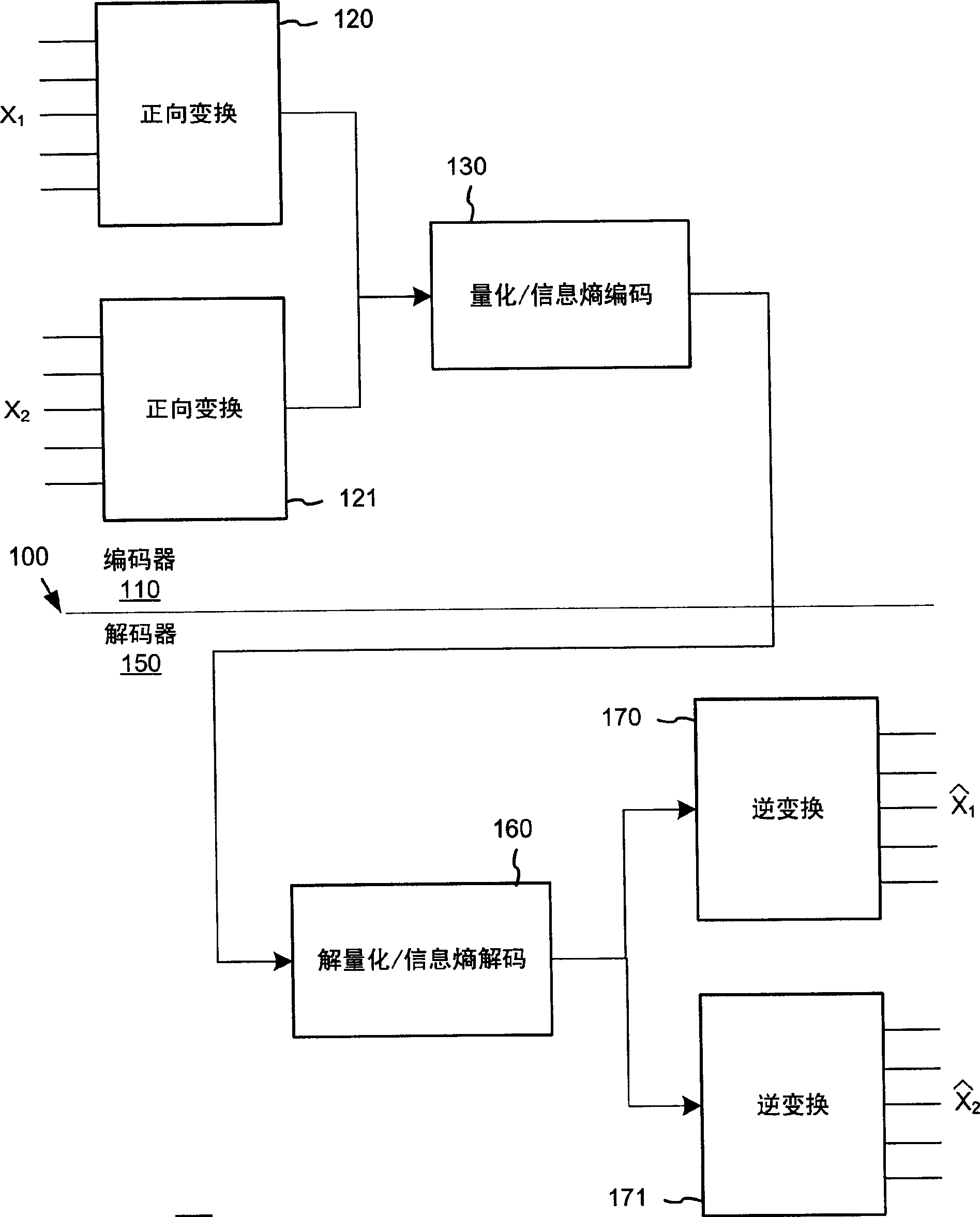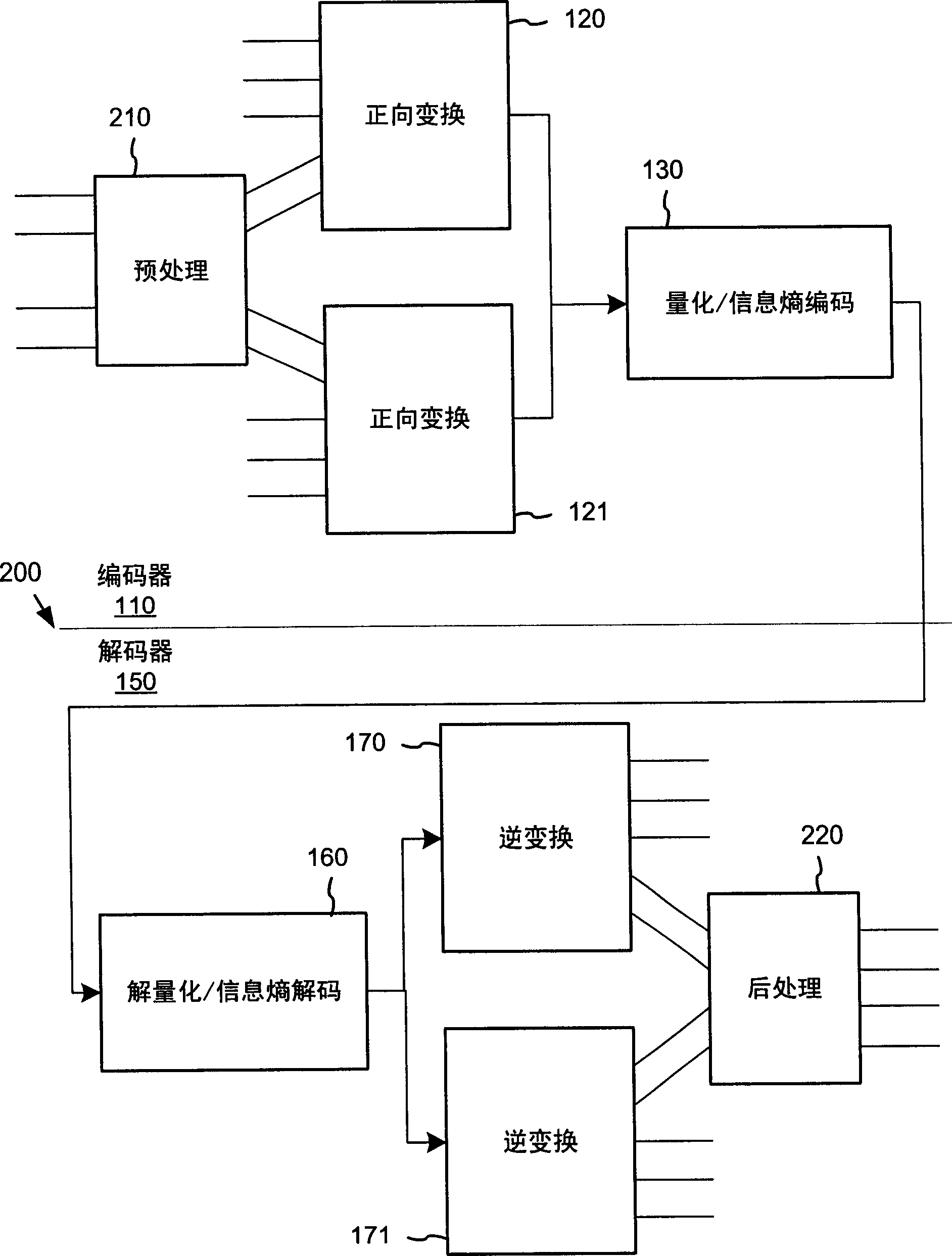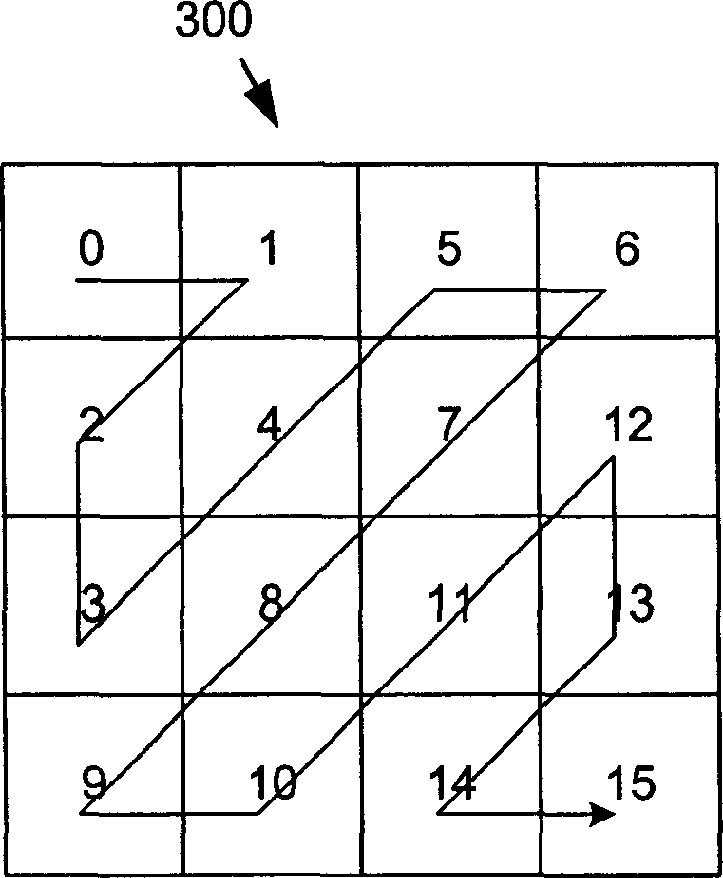Adaptive coefficient scan order
A scanning sequence and self-adaptive technology, applied in the direction of digital video signal modification, TV, pulse modulation TV signal transmission, etc., can solve the problem that there is no inherent requirement for the continuity of the scanning mode, etc.
- Summary
- Abstract
- Description
- Claims
- Application Information
AI Technical Summary
Problems solved by technology
Method used
Image
Examples
Embodiment Construction
[0034] The description that follows relates to a digital media compression system or encoder / decoder utilizing adaptive coefficient scan order techniques. For purposes of illustration, one embodiment of a compression system incorporating adaptive coefficient scan order techniques is an image or video compression system. In addition, reversible overlap operators can also be added to compression systems or encoders / decoders for other digital media or 2D data. The adaptive coefficient scan order technique does not require the digital media compression system to encode the compressed digital media in a specific encoding format.
[0035] 1. Encoder / Decoder
[0036] Figure 4 and Figure 5 is a generalized diagram of the process used in a typical 2-dimensional (2D) data encoder 400 and decoder 500 based on a lapped transform and using adaptive coefficient scan order as will be described more fully below. The schematic diagram represents an inductive or simplified illustration of ...
PUM
 Login to View More
Login to View More Abstract
Description
Claims
Application Information
 Login to View More
Login to View More - R&D
- Intellectual Property
- Life Sciences
- Materials
- Tech Scout
- Unparalleled Data Quality
- Higher Quality Content
- 60% Fewer Hallucinations
Browse by: Latest US Patents, China's latest patents, Technical Efficacy Thesaurus, Application Domain, Technology Topic, Popular Technical Reports.
© 2025 PatSnap. All rights reserved.Legal|Privacy policy|Modern Slavery Act Transparency Statement|Sitemap|About US| Contact US: help@patsnap.com



